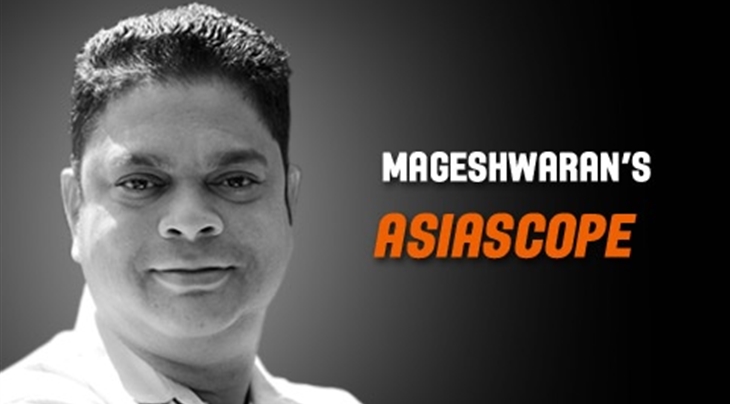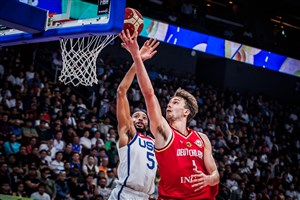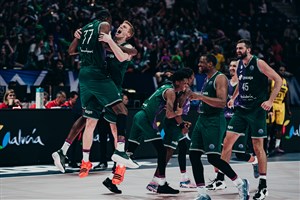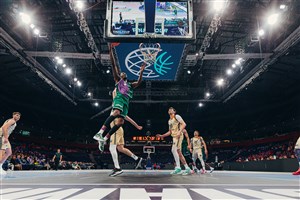
Ha! Time for the Korean giant to pull his height!
KUALA LUMPUR (Mageshwaran's AsiaScope) - Korea coach Yoo Jae-Hak’s decision to include giant center Ha Seung-Jin in the training roster for the 2014 FIBA Basketball World Cup to be played in Spain from 30 August to 14 September has as many staunch supporters as those who raise their eyebrows in sceptical surprise. And both are equally right.
For starters, Ha Seung-Jin standing at 2.21m tall is one of the tallest players seen in FIBA Asia basketball. Surely he ranks among the very few in that height category from Korea. A mandatory stint in the Army was probably one of the reasons why the Portland Trail Blazers’ 46th pick in the 2004 NBA Draft was kept out of Korea’s campaign – including the preparations – in last August’s 27th FIBA Asia Championship in Manila (Philippines).
Therefore when it comes to size Ha Seung-Jin is an automatic pick for any coach in the world, especially in FIBA Asia.
"For the past two years, no one in our team has been taller than Kim Jong-Kyu (the 2.07m center who had an impressive maiden KBL season with the Changwon LG Sakers taking them all the way to the Finals)," was all Yoo Jae-Hak had to say about including Ha Seung-Jin.
"Ha Seung-Jin is healthier than ever," was the only additional comment even when questioned.
Healthy enough, yes. Tall enough, sure. But good enough? This is the question that’s being raised with surprise and suspicion. And for those who follow FIBA Asia basketball, this question is not completely misplaced.
For, Ha Seung-Jin is yet to do anything proportionate enough to his height on the court for the Korean National Team. Influential performances have been more sporadic than you’d expect from somebody as physically imposing.
With due respect to the teams, Ha Seung-Jin has produced the numbers that can be seen commensurate with his height only against teams that were less organised (like the 15 rebounds against Bahrain at the 2006 Doha Asian Games) or less experienced (like the third place play-off against Kazakhstan at the 2007 FIBA Asia Championship in Tokushima).
And in the crunch games (like in the third place play-off against the Philippines at the 2011 FIBA Asia Championship in Wuhan) coaches, in this case even Hur Jae (with whom Ha Seung-Jin was at that time playing for Jeonju KCC Egis in the KBL), have shied away from even fielding him for want of speed and mobility – the two factors that marked Korea’s brilliance in Manila which took them to the 2014 FIBA Basketball World Cup after a gap of 16 years.
Ha Seung-Jin has failed to meet the expectations or justify his induction when matched up against the tall players of rival teams – like China’s Yi Jianlian, Iran’s Hamed Haddadi or for that matter Japan’s naturalized center JR Sakuragi – on more than one occasion. This too is a matter of fact.
And given the promise shown by youngsters like Kim Jong-Kyu and university heartthrob Lee Jong-Hyun the questions raised about Ha Seung-Jin’s inclusion are certainly credible. There are those who even argue for a place in the roster for Masango HS rising star Park Jong-Hyun.
Korean basketball is on the upswing. Yoo Jae-Hak has ensured that with a sterling performance in Manila last year using, as a popular Korean blog pointed out, "a Mike D’Antoni inspired sets that involve spacing, continuous screens inspired from the flex offense that makes it imperative that bigmen must be mobile and have the range to shoot jumpers to make way for strong guard and wing plays".
Ha Seung-Jin has to certainly pull his height to fit into this scheme. There’s nothing called dead height, after all.
So long…
S Mageshwaran
FIBA Asia
FIBA's columnists write on a wide range of topics relating to basketball that are of interest to them. The opinions they express are their own and in no way reflect those of FIBA.
FIBA takes no responsibility and gives no guarantees, warranties or representations, implied or otherwise, for the content or accuracy of the content and opinion expressed in the above article.

















